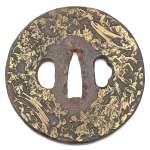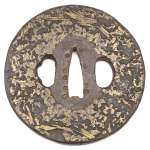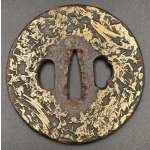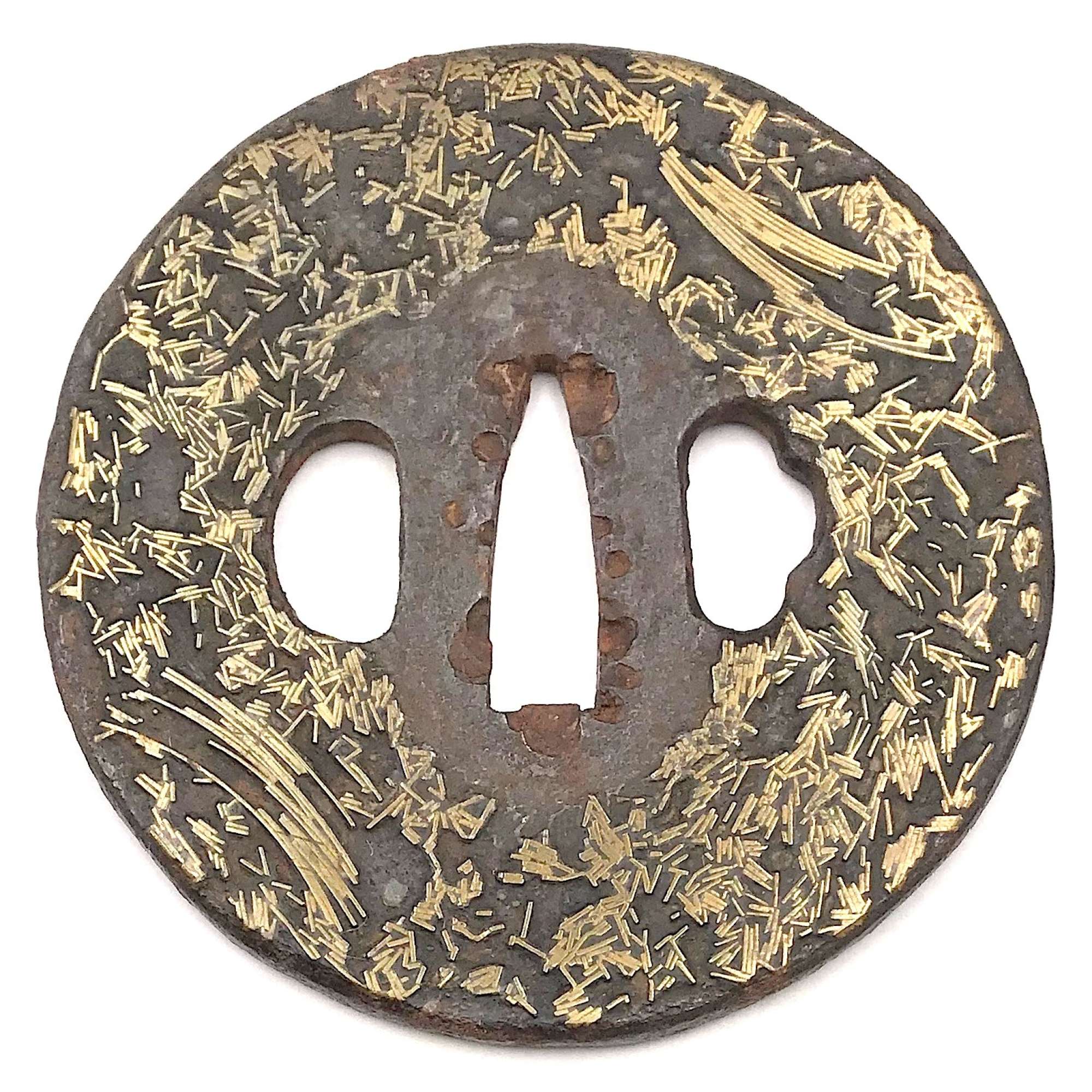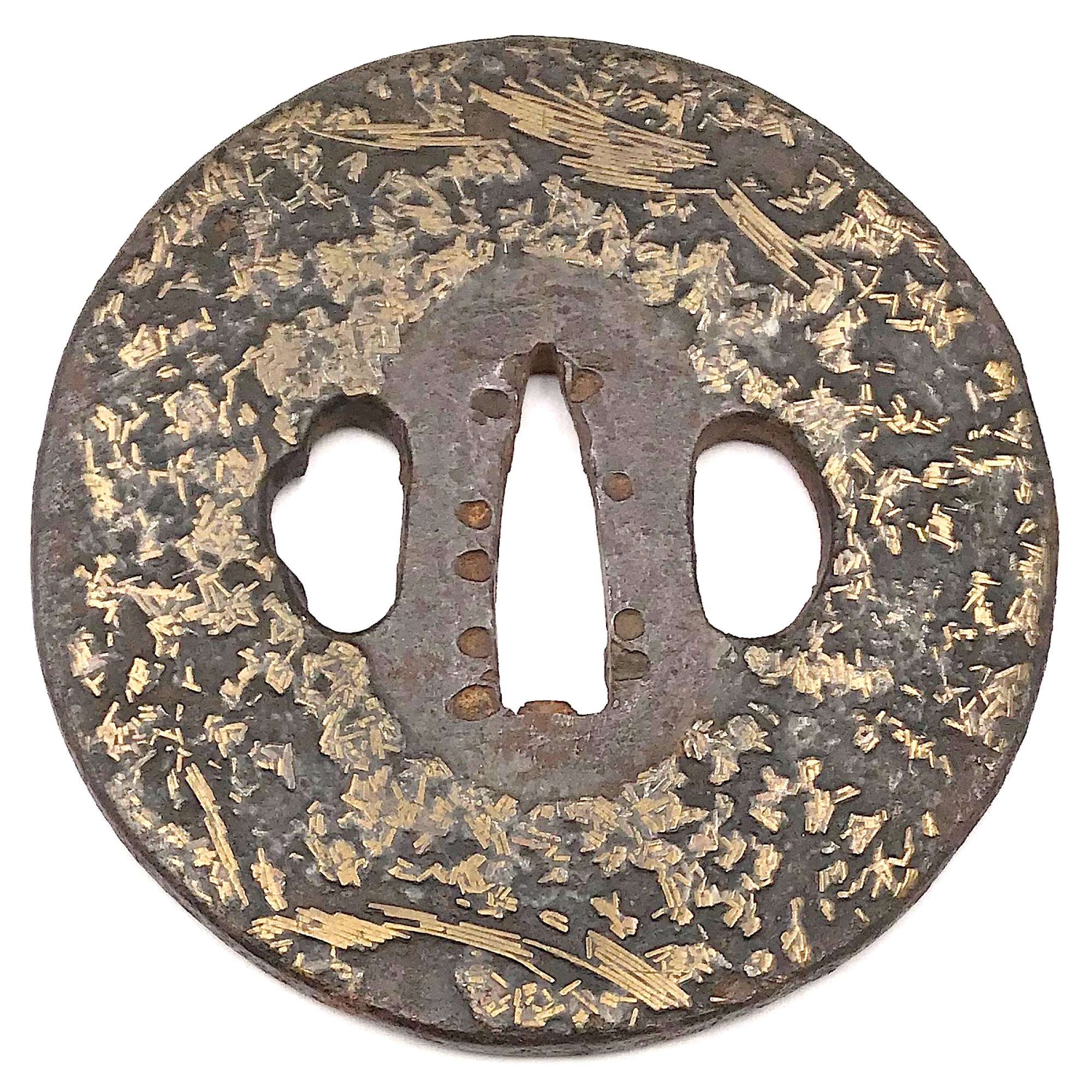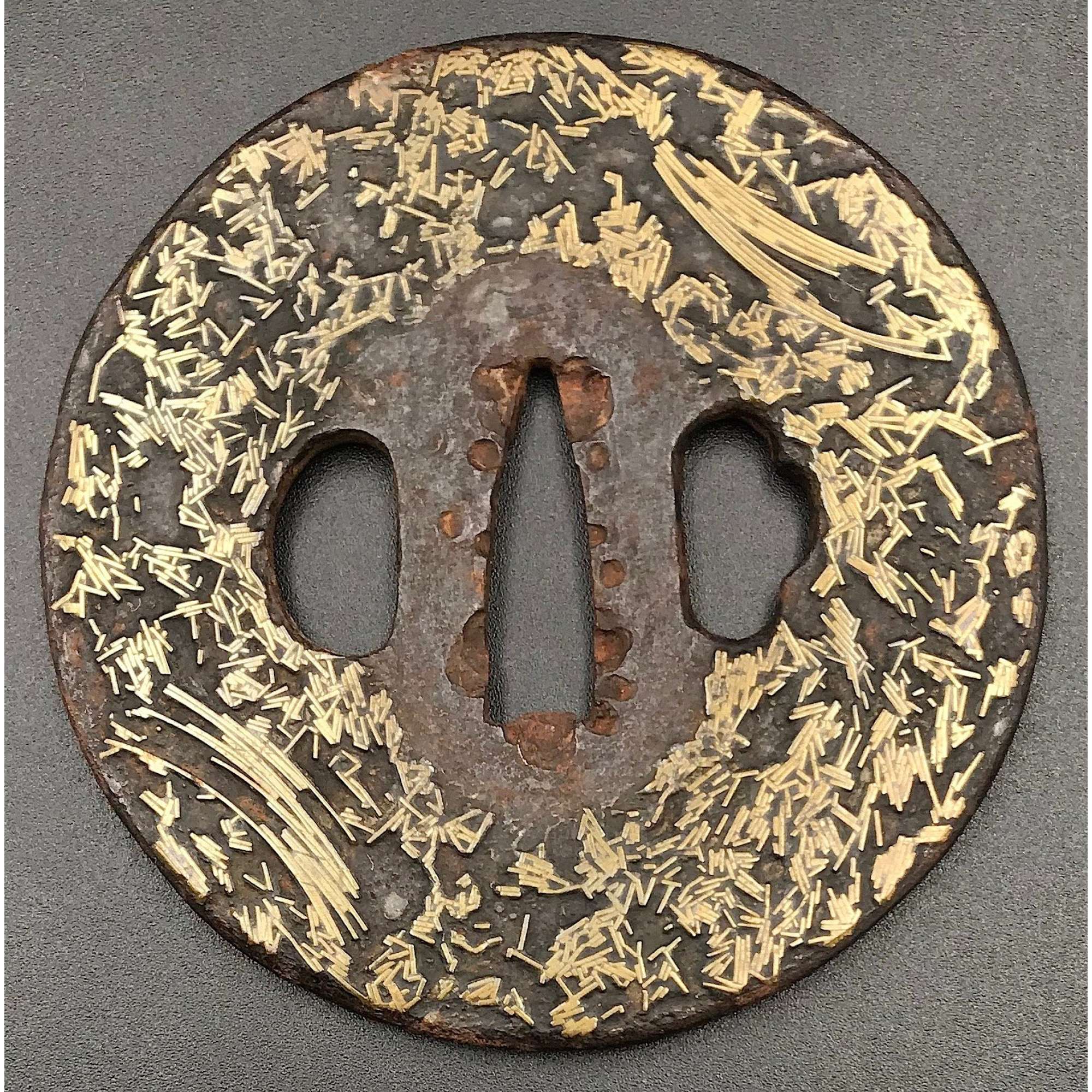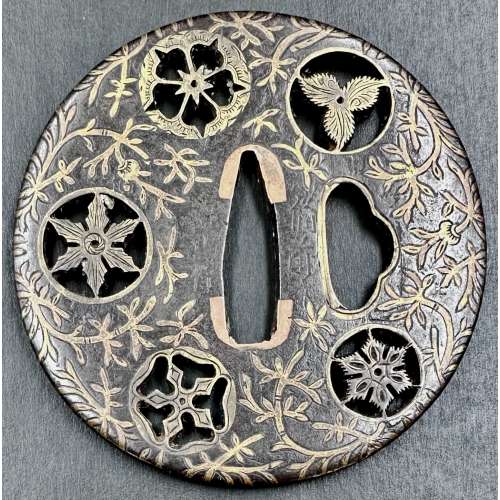Gomoku-zōgan tsuba. Iron, inlaid with brass scrap (gomoku-zōgan), and polished.
Height: 75.3 mm; Width 74.9 mm; Thickness at seppa-dai: 3.6 mm. Weight 130.2 g.
Edo, 18th century.
Gary D. Murtha dedicates 10 pages to this type of tsuba: “…they were made by soldering brass overlay scraps to the iron plate”. Actual gomoku-zōgan tsuba are seldom found in collections most likely because they have little if any artistic attributes. In addition, many have rough surfaces making them questionable for use on a sword. It is said that many of these were produced in Yokohama for export to the West during the late Edo period”. G. D. Murtha then describes the technique of making gomoku-zōgan in every detail, and states that “The brass pieces are said to represent ‘fallen pine needles’, a description most likely created to add aesthetic value to help market the tsuba” [see:Gary D. Murtha. Japanese sword guards. Onin – Heianjo – Yoshiro. GDM Publications, 2016; pp. 160-161].


